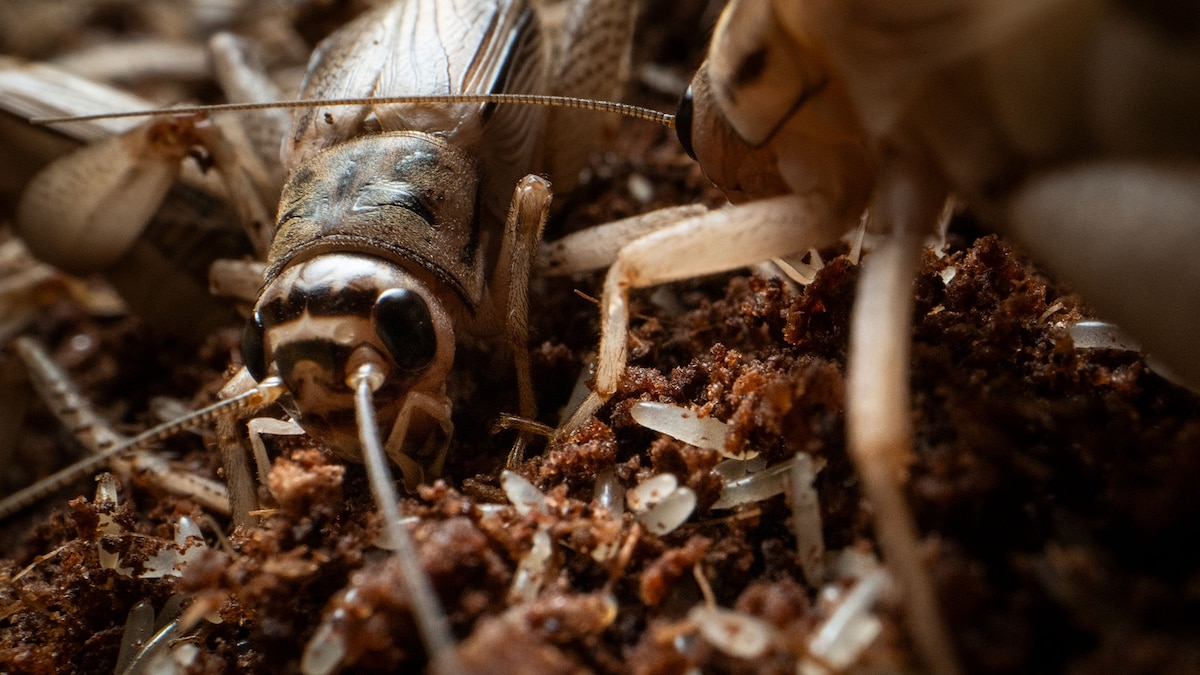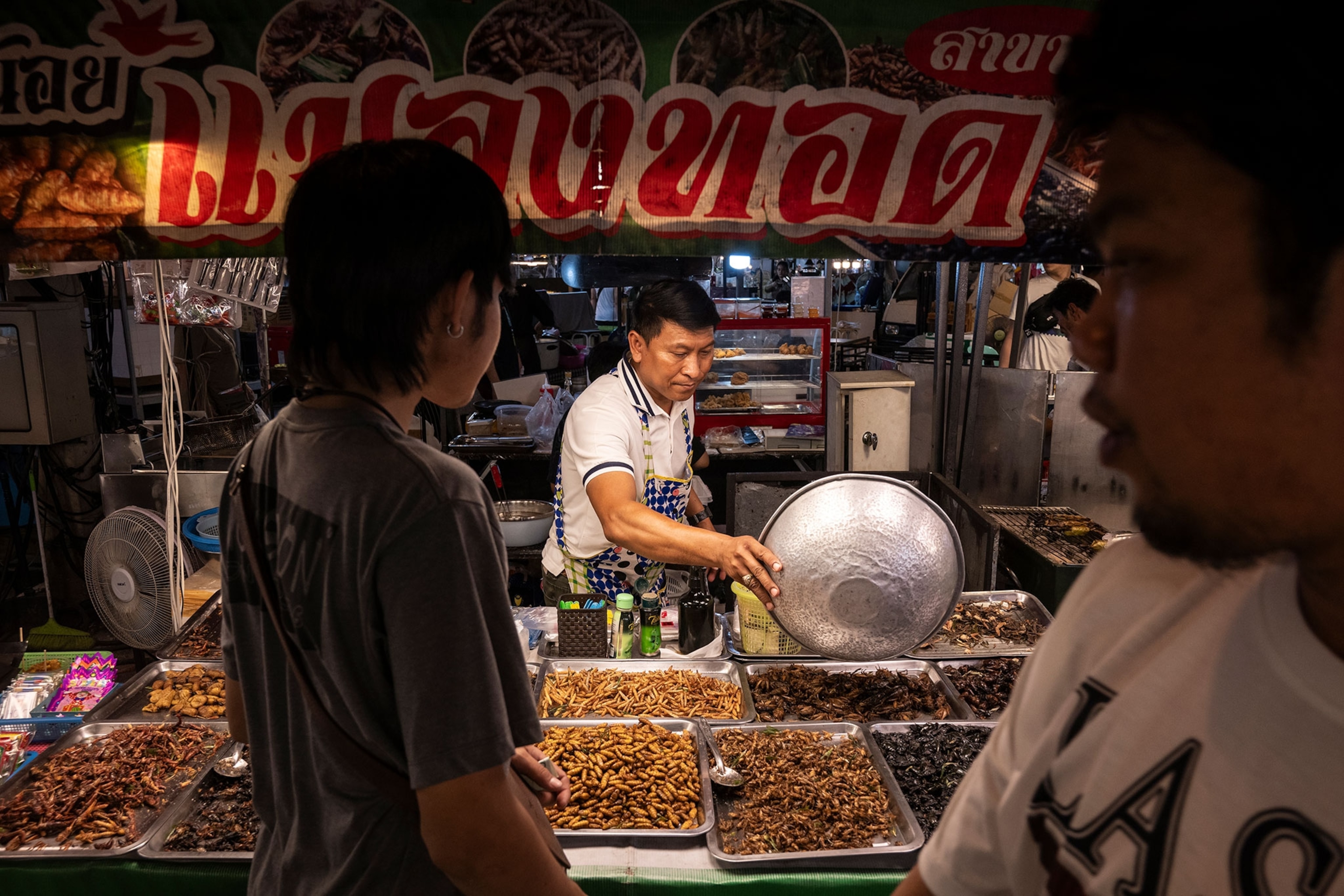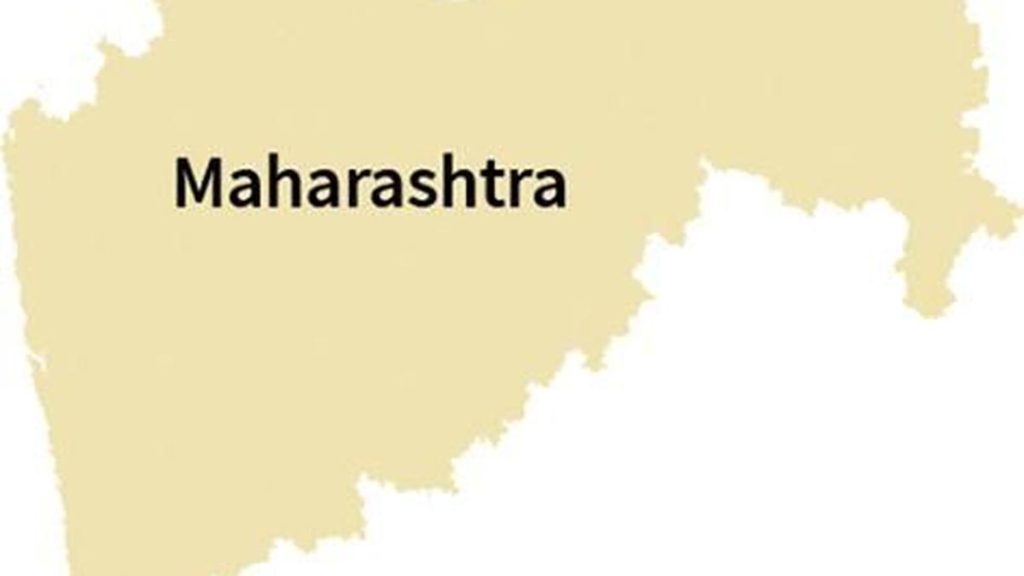Now Reading: How Thailand became a world leader in edible insects
-
01
How Thailand became a world leader in edible insects
How Thailand became a world leader in edible insects

Photographs bySirachai Arunrugstichai
ByStefan Lovgren
Growing up in Thailand’s northeastern Isan region, Suwimon Chantajohn learned from her grandfather which insects were best to eat. Captivated by his stories of surviving on bugs during his military service in World War II, she spent her childhood scouring the dry fields for crickets, bamboo worms, and scarab beetles hiding in the grass, under bark, or beneath cow dung.
As an adult, she wanted to start her own business and traveled the world. While visiting a game lodge in Tanzania, a German guest screamed when Chantajohn brushed a bug off her arm. The moment sparked an idea. Back in Thailand, she launched Siam Bugs, a cricket farming business.
Today, her farm, tucked away in a quiet neighborhood outside Pattaya, is part of Thailand’s thriving edible insect industry, home to over 20,000 cricket farms. As a member of a cooperative of 18 local farms, her operation produces seven tons of crickets annually. Inside a warehouse the size of an airplane hangar, rows of crickets chirp through their 45-day lifecycle, sustained by a diet of grain, corn, and rice bran. “I feel like the mother of crickets,” Chantajohn says.

A worker provides water to African crickets (Gryllus bimaculatus) at Srichana Cricket Farms in Rayong, Thailand.

Workers shake house crickets (Acheta domesticus) from milk cartons inside a containment pond before a harvest at Siam Bugs Farm in Pattaya City, Chonburi, Thailand.
Rural communities in Thailand have long foraged insects as a vital source of protein. But much of this traditional practice has shifted to commercial farming, positioning Thailand as a global leader in edible insect production. Farms producing crickets and other insects now supply international pet food markets, while restaurants are reshaping how the bugs are added to various foods and even placing them on high-end menus.
Edible insects have long been promoted as nutritious and environmentally friendly, with the potential to transform global agriculture. But mainstream acceptance, especially in western societies, has remained limited, largely due to the “ick” factor of chowing down on bugs. But that could be changing, experts say, as Thailand leads the way in sustainable insect farming. “I think they can set an example for the rest of the world,” says Arnold van Huis, a professor of tropical entomology at Wageningen University in the Netherlands.

At Akkee, a fine-dining restaurant with one Michelin star, customers can enjoy a variety of seasonal insects in their dishes.
Gross or not?
Entomophagy, or eating insects, dates back to biblical times and is practiced by up to two billion people worldwide. Insects are packed with protein, fats, and other compounds that have been linked to various health benefits. For example, the fiber chitin that forms their exoskeletons helps with metabolism and gut microbiome health.
In Thailand, home to over 200 edible insect species—second only to Mexico—bug-eating is most common in the rural north and northeastern regions, where insects serve as an abundant meat substitute. “People can go into the field and collect them, and it doesn’t cost any money,” says Natapot Warrit, an entomologist at Chulalongkorn University in Bangkok.
Many markets offer a variety of wriggling and still beetles, crickets, ants, caterpillars, and cicadas. Popular dishes include buttery bamboo caterpillars; giant water bugs, whose musky scent resembles blue cheese; and red ant eggs, a key ingredient in the springtime curry dish “Gaeng Kai Mot Daeng.” In the south, cockchafers—large seasonal beetles—often fetch prices higher than chicken or pork.

A customer at Akkee eats a deep-fried sago worm, larvae of Asian palm weevil (Rhynchophorus ferrugineus) beetles.

Cicadas are prepared for serving in the kitchen at Akkee.
Thailand’s role as the regional hub for edible insects is reflected in Bangkok’s bustling Khlong Toei market. Among vendor Oonrueng Boonthum’s largest customers are Vietnamese buyers who source water bugs for their restaurants. “They don’t have these bugs in Vietnam,” Boonthum explains, seated at a table piled high with bags of bugs on the busy sidewalk outside the market.
Even in Thailand, the biggest challenge for the edible insect industry is people overcoming the “gross” factor of eating whole bugs. In response, producers have turned to grinding insects into flour-like powders that can be mixed into familiar foods and products like cocoa, bread, and noodles.
“Many people are still scared of the full form of the insect,” says Thanaphum “Eak” Muang-Ieam, who was until recently the president of the Thai Insect Industry Association. “If you put it into powder, that fear goes away.”
From fried crickets to fine dining
Though the insect powder market is growing, crickets, in particular, are still widely sold whole—fried and popular as beer snacks. Some restaurants have also found success substituting bugs for meat products.
At Bounce Burger, a restaurant in central Bangkok run from the family home of chef Pooripat “Art” Thiapairat, crickets are fried and peeled; their bodies make up 15 percent of the burger meat patties. “People say they don’t taste the crickets, but they love the burgers,” says Thiapairat.

African crickets (Gryllus bimaculatus) are raised in containment ponds at Srichana Cricket Farm in Rayong, Thailand.
On a recent day, three twentysomething influencers from a Thai social media company visited Bounce Burger to promote it, sampling the burgers and praising their protein-rich, health-boosting qualities. “Young people in Thailand are used to eating insects, but many don’t realize they’re a superfood,” says 26-year-old Natcha Wichean.
Some restaurants embrace insects in their whole form, turning once-reviled creepy crawlers into celebrated stars of high-end dining. At Akkee, a sleek Michelin-starred restaurant tucked away in an industrial area on Bangkok’s outskirts, bugs feature prominently on the menu crafted by Sittikorn “Ou” Chantop, who was named Thailand’s 2024 Michelin Young Chef of the Year.
You May Also Like
Chantop grew up foraging for and cooking insects with his family at home, a tradition that shaped his culinary roots. He originally envisioned Akkee as a craft beer venue, but the Covid pandemic forced its closure and made him reconsider food and its scarcity. Drawing from his background, Chantop decided to incorporate insects into fine dining. “I was always interested in them because their flavor and aroma are so different from the normal food chain,” he says.

At a night market in Bangkok, Thailand, food stall vendors sell various deep-fried insects.

Exofood, a company that promotes innovation and education in the edible insect industry, sells various products at its headquarters in Bangkok, Thailand.
On a recent evening, the first guests arrived at 5:30 p.m. as the kitchen buzzed with activity. The cooking was done entirely over open fires without electronic appliances. Insect dishes, including deep-fried bamboo worms and roasted subterranean ants, were prepared alongside meat and seafood. A fresh box of crickets from the northern city of Chiang Mai was unpacked. Later, insects could be seen crawling behind the kitchen glass. None of the guests seemed fazed.
The future of edible insects
With bugs transitioning from a rural staple in Thailand to more commercialized products, some worry the country may be losing its traditional heritage. But others argue the shift could benefit local farmers, enabling them to raise insects in their villages and earn a living without relocating to cities. Certain insect species, like weaver ants, remain nearly impossible to farm and must continue to be foraged.
The environmental benefits of edible insect farming have been well-documented. The United Nations’ Food and Agriculture Organization (FAO) has long promoted it as the future of sustainable food. Insect farming uses significantly less land, water, and energy than traditional livestock, while emitting fewer greenhouse gases and generating minimal waste. Even cricket droppings, rich in nitrogen, serve as an excellent natural fertilizer for vegetables.
(Interested in sampling edible insects? Here are eight popular bugs to try.)
Thailand has already started to lead the way globally, with researchers at Khon Kaen University helping the FAO develop guidance on cricket farming in 2020. Strict regulations on farm hygiene, pest control, and food safety have positioned the country as a leading exporter of edible insects in Asia. But, says Muang-Ieam, the former industry association head, “In order to truly change things on a global scale, it’s going to take more than just Thailand.”

Sittikorn Chantop (right) and other staff prepare insect ingredients in the kitchen of Akkee.
Beyond Asia, export markets are more limited. Currently, Thailand is unable to export edible insect products to the European market. Skepticism about eating insects remains strong across much of Europe, and insect farming receives far less government support than conventional agriculture.
For now, many companies in Thailand and beyond are focusing on the rapidly expanding pet food market, where black soldier fly larvae are in high demand. These larvae provide a protein-rich alternative to meat and fish traditionally used in pet food. “Pet food is the entryway to the edible insect market,” says Athivach Pongsattasin, founder of Bangkok-based company Exofood. “While human consumption is the future goal, for now, it’s easier to feed insects to pets.”
The North American market for edible insects is still in its early stages and currently aimed at pets, but some companies have made significant investments. Aspire Food Group, for example, operates what is said to be the world’s largest cricket processing facility, a 150,000-square-foot plant in London, Ontario. “It’s never been done before at this scale,” says David Rosenberg, Aspire’s CEO.

House crickets (Acheta domesticus) are raised in vertical containment ponds at Siam Bugs Farm in Pattaya City, Chonburi, Thailand. The rice-like pellets are freshly laid eggs.
But scaling up has had its challenges. Aspire recently announced it would temporarily scale back production to improve its manufacturing system, leading to severe layoffs. Rosenberg refers to the setbacks as growing pains. “We’re trying to answer questions that haven’t been asked before,” he says, noting the industry’s infancy compared to livestock farming. “For pigs and chickens, there’s 80 years of genetic history. For insects, we’re just starting.”
Back in Thailand, Chantajohn recently received Thai Food and Drug Administration clearance to market Ju Lin C, a prebiotic health supplement made with cricket powder. Research suggests that cricket powder can enhance gut microbiota diversity by promoting the growth of beneficial bacteria, improving overall gut health. Says Chantajohn: “Crickets are the superheroes to save the world.”
























